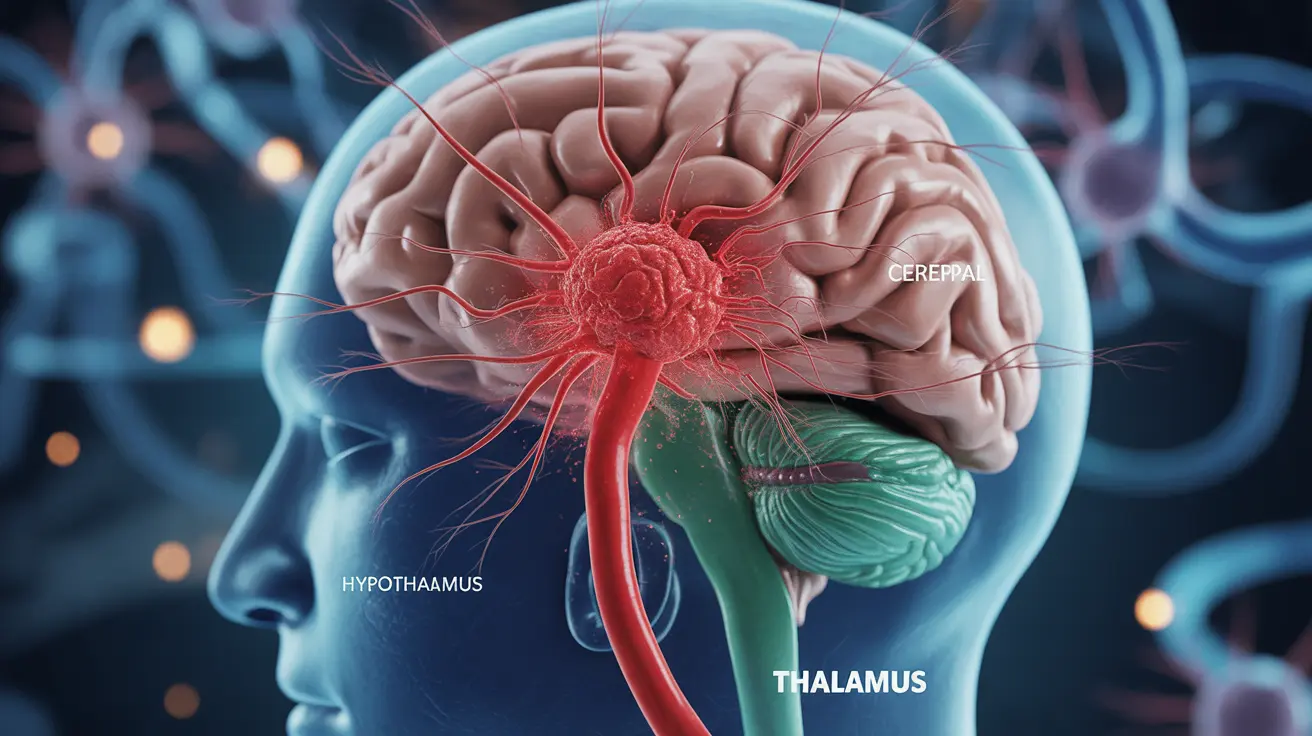A thalamic stroke occurs when blood flow is disrupted to the thalamus, a crucial part of the brain responsible for processing sensory information and regulating consciousness. This specific type of stroke can have unique symptoms and consequences due to the thalamus's important role in various brain functions. Understanding the signs, causes, and treatment options for a thalamic stroke is essential for both prevention and optimal recovery.
What Happens During a Thalamic Stroke?
During a thalamic stroke, blood flow to the thalamus becomes blocked or severely reduced, leading to damage in this vital brain region. The thalamus acts as a relay station for sensory and motor signals, and when affected by a stroke, it can disrupt multiple bodily functions and sensations. This type of stroke can be either ischemic (caused by a blood clot) or hemorrhagic (caused by bleeding in the brain).
Key Signs and Symptoms
Thalamic strokes often present with distinctive symptoms due to the thalamus's specialized functions. Common signs include:
- Sensory disturbances on the opposite side of the body
- Changes in consciousness or alertness
- Vision problems
- Speech difficulties
- Memory issues
- Unusual pain sensations
- Balance and coordination problems
Risk Factors and Causes
Several factors can increase the risk of experiencing a thalamic stroke:
- High blood pressure
- Diabetes
- Heart disease
- Smoking
- Advanced age
- Family history of stroke
- High cholesterol
- Obesity
- Sedentary lifestyle
Diagnosis and Assessment
Diagnosing a thalamic stroke requires prompt medical attention and specific imaging tests. Healthcare providers typically use:
- CT scans
- MRI scans
- Angiograms
- Blood tests
- Neurological examinations
Treatment Approaches
Treatment for thalamic stroke must begin as quickly as possible to minimize brain damage. The immediate focus is on:
- Administering clot-busting medications (for ischemic strokes)
- Managing blood pressure
- Preventing complications
- Addressing specific symptoms
Long-term Management
After the initial treatment phase, recovery often involves:
- Physical therapy
- Occupational therapy
- Speech therapy
- Pain management
- Cognitive rehabilitation
Recovery and Prognosis
The recovery journey after a thalamic stroke varies significantly among individuals. Factors affecting recovery include:
- The extent of brain damage
- How quickly treatment was received
- The patient's overall health
- Commitment to rehabilitation
- Support system strength
Frequently Asked Questions
What are the common symptoms of a thalamic stroke to watch for?
Common symptoms include sensory changes on one side of the body, altered consciousness, vision problems, speech difficulties, and unusual pain sensations. These symptoms typically appear suddenly and require immediate medical attention.
What causes a thalamic stroke and what risk factors increase my chance of having one?
Thalamic strokes are primarily caused by blood clots or bleeding in the brain. Risk factors include high blood pressure, diabetes, heart disease, smoking, advanced age, and family history of stroke. Maintaining a healthy lifestyle and managing underlying health conditions can help reduce risk.
How is a thalamic stroke diagnosed and what imaging tests will be used?
Diagnosis typically involves CT scans, MRI scans, and angiograms to visualize the brain and blood vessels. Doctors will also perform neurological examinations and blood tests to confirm the diagnosis and determine the stroke's cause.
What treatments are available for thalamic stroke and how soon should they be started?
Treatment should begin immediately and may include clot-busting medications for ischemic strokes, blood pressure management, and supportive care. The most effective treatments are those started within the first few hours after symptoms begin.
What is the typical recovery process and long-term outlook after a thalamic stroke?
Recovery varies by individual but typically involves a combination of physical, occupational, and speech therapy. The long-term outlook depends on factors such as the stroke's severity, timing of treatment, and dedication to rehabilitation. Many patients show significant improvement with proper care and rehabilitation.




